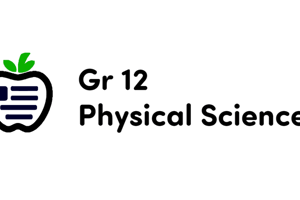Podcast
Questions and Answers
How does a change in the state of a cell typically affect its absorption spectrum?
How does a change in the state of a cell typically affect its absorption spectrum?
- It alters the cellular composition, which in turn modifies the optical spectrum. (correct)
- The absorption spectrum becomes more intense without changing its characteristics.
- The absorption spectrum remains constant, regardless of cellular changes.
- It only affects the physical size of the cell, not the absorption spectrum.
Which of the following hemoglobin derivatives have absorption maxima in the blue spectrum?
Which of the following hemoglobin derivatives have absorption maxima in the blue spectrum?
- Deoxyhemoglobin (HbH) (correct)
- Oxyhemoglobin (HbO2)
- Methemoglobin (MetHb)
- Carboxyhemoglobin (HbCO)
Which of the following hemoglobin derivatives have absorption maxima in the yellow spectrum?
Which of the following hemoglobin derivatives have absorption maxima in the yellow spectrum?
- Oxyhemoglobin (HbO2)
- Deoxyhemoglobin (HbH)
- Carboxyhemoglobin (HbCO) (correct)
- Methemoglobin (MetHb)
A researcher observes that a solution's light absorption spectrum shifts significantly after a slight change in its molecular substituents. What can be inferred from this observation?
A researcher observes that a solution's light absorption spectrum shifts significantly after a slight change in its molecular substituents. What can be inferred from this observation?
A cuvette containing a blood solution has a concentration of $0.85$ mol/L with a molar absorbance of $0.35$ L/(cm * mol). If the cuvette has a length of $8$ cm, how much will the light intensity decrease after passing through the solution? (Round the answer to the nearest integer)
A cuvette containing a blood solution has a concentration of $0.85$ mol/L with a molar absorbance of $0.35$ L/(cm * mol). If the cuvette has a length of $8$ cm, how much will the light intensity decrease after passing through the solution? (Round the answer to the nearest integer)
In spectrophotometry, what principle allows researchers to relate the amount of light absorbed by a substance to the concentration of the substance?
In spectrophotometry, what principle allows researchers to relate the amount of light absorbed by a substance to the concentration of the substance?
Warren Lee Butler's work primarily contributed to which field?
Warren Lee Butler's work primarily contributed to which field?
How do slight differences in the structure of chlorophyll A and chlorophyll B affect their spectral characteristics?
How do slight differences in the structure of chlorophyll A and chlorophyll B affect their spectral characteristics?
If the composition of a cellular substance changes, what is the direct consequence on its optical properties?
If the composition of a cellular substance changes, what is the direct consequence on its optical properties?
In which fields are spectral methods widely used today, based on the text?
In which fields are spectral methods widely used today, based on the text?
Based on the provided spectra, which region(s) of the spectrum do oxygenated hemoglobin derivatives have absorption maxima?
Based on the provided spectra, which region(s) of the spectrum do oxygenated hemoglobin derivatives have absorption maxima?
Which of the following is the MOST direct application of understanding a cell's absorption spectrum?
Which of the following is the MOST direct application of understanding a cell's absorption spectrum?
How does the concentration of a solution affect the passage of light through it, according to the Beer-Lambert Law?
How does the concentration of a solution affect the passage of light through it, according to the Beer-Lambert Law?
Why is spectroscopy considered a valuable tool in both medicine and pharmacy?
Why is spectroscopy considered a valuable tool in both medicine and pharmacy?
If a substance has a high molar absorbance, what does this indicate about its ability to absorb light at a specific wavelength?
If a substance has a high molar absorbance, what does this indicate about its ability to absorb light at a specific wavelength?
In the context of spectrophotometry, what does the term 'cuvette' refer to?
In the context of spectrophotometry, what does the term 'cuvette' refer to?
Consider two solutions with different concentrations of the same substance. Solution A has twice the concentration of Solution B. According to the Beer-Lambert Law, how will their absorbance values compare, assuming the same path length and other conditions?
Consider two solutions with different concentrations of the same substance. Solution A has twice the concentration of Solution B. According to the Beer-Lambert Law, how will their absorbance values compare, assuming the same path length and other conditions?
A researcher is using spectroscopy to analyze a sample, but notices that the absorption band maxima are shifted compared to the expected values. What is the MOST likely cause of this shift?
A researcher is using spectroscopy to analyze a sample, but notices that the absorption band maxima are shifted compared to the expected values. What is the MOST likely cause of this shift?
What is the primary reason for using monochromatic light (light of a single wavelength) in spectrophotometry?
What is the primary reason for using monochromatic light (light of a single wavelength) in spectrophotometry?
If a compound appears green to the human eye, what does this indicate about its absorption spectrum in the visible region?
If a compound appears green to the human eye, what does this indicate about its absorption spectrum in the visible region?
Flashcards
Absorption Spectrum of a Cell
Absorption Spectrum of a Cell
The absorption spectrum depends on a cell's cellular substance composition. It provides information about the substance's state, changing with its composition and optical spectrum.
Hemoglobin Derivatives
Hemoglobin Derivatives
Deoxyhemoglobin (HbH), Carboxyhemoglobin (HbCO), Oxyhemoglobin (HbO2), Methemoglobin (MetHb).
HbO2 Absorption Maxima
HbO2 Absorption Maxima
Oxygenated hemoglobin has absorption maxima in the blue, yellow, and green regions of the spectrum.
Spectroscopy applications
Spectroscopy applications
Signup and view all the flashcards
Chlorophyll A and B spectra
Chlorophyll A and B spectra
Signup and view all the flashcards
Study Notes
- A cell's absorption spectrum relies on its cellular composition.
- The spectrum provides details on the substance's state.
- Changes in a cell's state alter its composition, thus affecting the optical spectrum.
Hemoglobin Derivatives
- The absorption spectra of hemoglobin derivatives are shown in a the figure, including:
- Deoxyhemoglobin (HbH)
- Carboxyhemoglobin (HbCO)
- Oxyhemoglobin (HbO2)
- Methemoglobin (MetHb)
- Oxygenated hemoglobin has absorption maxima in the blue and yellow spectrum and the green region
Light Intensity Reduction
- A blood solution in a cuvette has a concentration of 0.85 mol/L.
- The solution's molar absorbance is 0.35 L/(cm * mol).
- The light intensity decreases significantly when passing through an 8 cm cuvette filled with the solution.
- Answer: 240
Warren Lee Butler
- Warren Lee Butler pioneered spectroscopy in biochemical and biological research, focusing on plant pigment systems and photosynthesis.
- Spectral methods are now common in medicine and pharmacy.
- Substituents significantly affect absorption band maxima.
- Even slight structural differences in chlorophyll molecules A and B cause changes in their spectral characteristics.
Studying That Suits You
Use AI to generate personalized quizzes and flashcards to suit your learning preferences.




